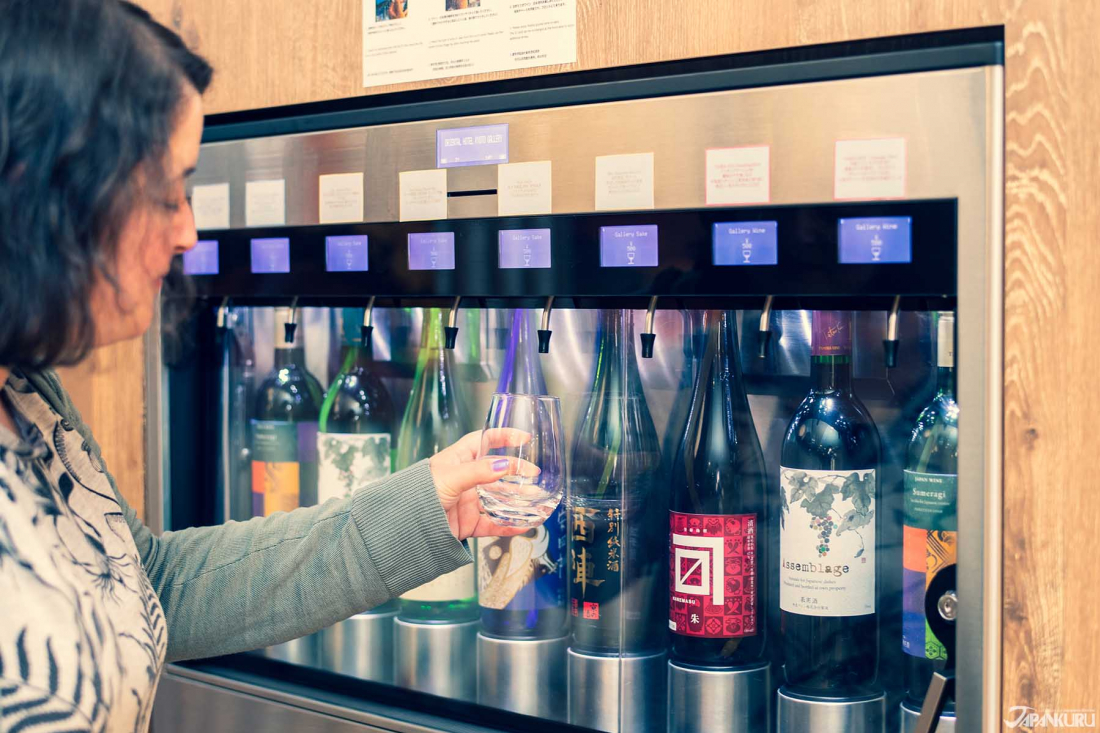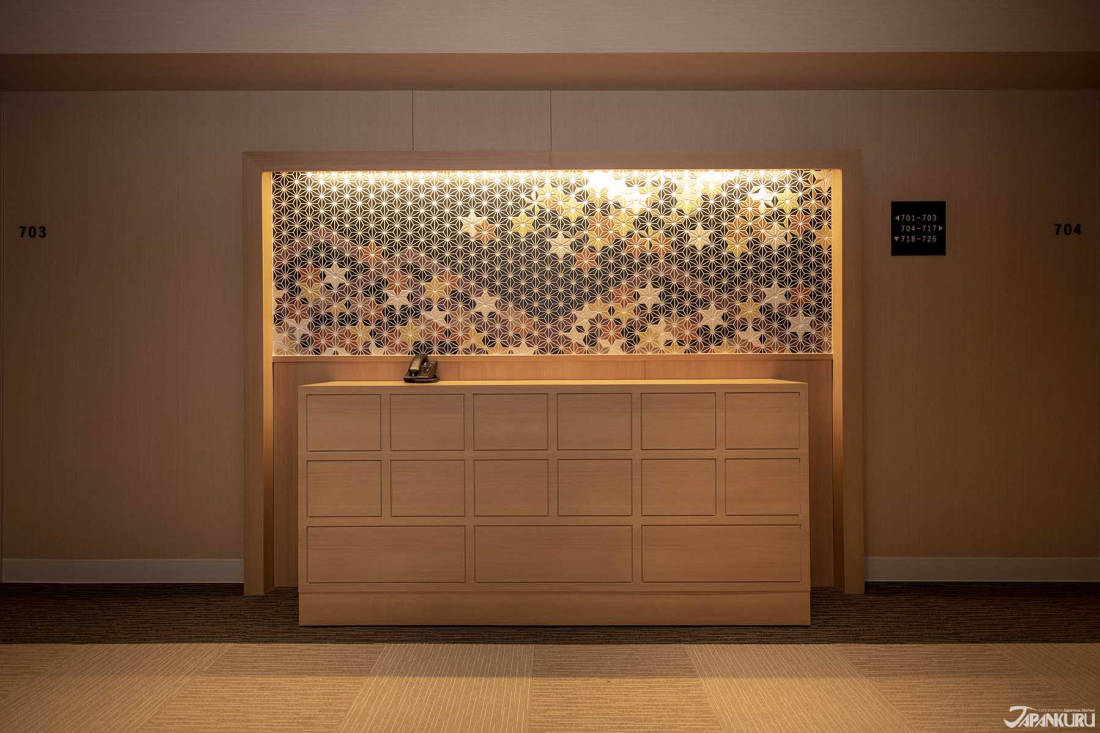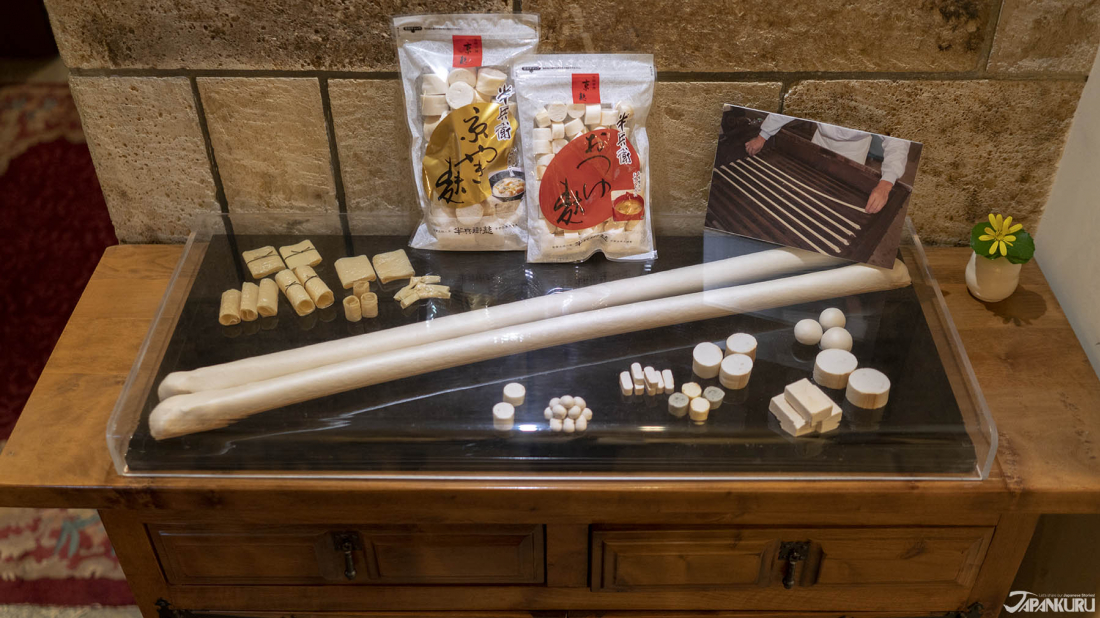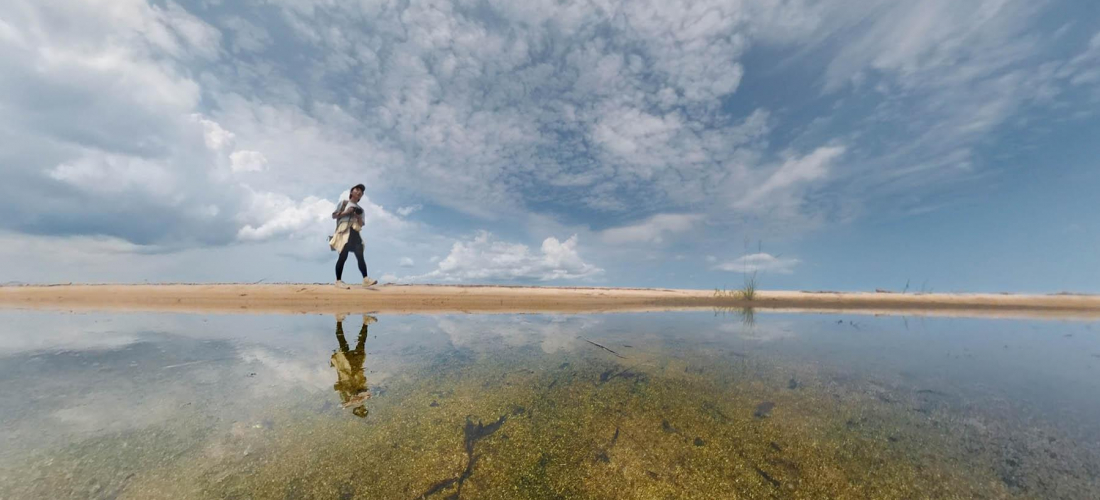
CONTENTS
On a historic Kyoto avenue and about as close to the subway station as you can get, this brand new Kyoto hotel combines traditional influences with a modern sense of style. Start the morning in a sleek new room, enter the lobby for a unique Kyoto breakfast buffet and some cultural displays, then head out of the hotel to find yourself surrounded by Japanese artisans and boutiques, and walk just minutes to arrive at Kiyomizudera Temple and some of Kyoto’s other beautiful sights. (Or hop right on the subway from Kiyomizu Gojo Station to get to the Fushimi Inari Shrine in no time!) Oriental Hotel Kyoto Gallery is a great choice for travelers looking for simple, clean accommodations and a spark of Kyoto charm.
Arrive in Oriental Hotel Kyoto Gallery
Upon hearing the name "Oriental Hotel Kyoto Gallery," you might just be wondering what about this hotel makes it a gallery? Well, take a look at the tradition-inspired architecture, the lobby displays, and the ink paintings hung in the guest rooms, and you'll start to understand the elegant choices that go into making the hotel both an attraction in itself, and such a pleasant place to stay.
423-1 Sujakucho, Higashiyama Ward, Kyoto
Phone: 075-541-8111
Official Website・Reservations
As you walk in you might just notice the locally made pottery in the foyer, a part of a long-held tradition in the area. Artisans have been making beautiful products along Gojo street for centuries, including unique pieces like these Kyoto ceramics. Along with the gentle fragrance of traditional Japanese incense, these elegant pottery pieces welcome you right into Japan's ancient capital.
Head to the front desk and the gallery continues! As the friendly staff check you in, the painting behind the counter (inspired by the famous Rinpa iris folding screens, held for over 200 years at nearby Nishi Honganji Temple) set the Kyoto mood, and the opposite wall includes a display of traditional Japanese ink paintings… featuring some classic Japanese anime characters! You've never seen Astro Boy look so good – check it out when you visit!
A facade inspired by traditional Kyoto machiya house (町屋) architecture and interior details sculpted using ancient Japanese woodworking techniques – there's plenty to admire at Oriental Hotel Kyoto Gallery, and these artful aspects of the hotel never change… but to add fresh new interest to every visit, they also put on a periodically changing cultural exhibition right in the lobby!
When we visited, the hotel's exhibition was ninja-themed! Genuine ninja weapons lined the wall, a ninja mannequin stood mysteriously by, and posters promised special ninja-themed events and workshops in and around the hotel while the exhibition lasted. Chatting with the staff, we learned that they have some intriguing exhibitions in the works as well. Traditional Buddhist singing bowls and other Buddhist accessories were next on the schedule, and we heard about some interesting plans to invite professional sumo wrestlers in the future. We're intrigued to see what else they'll arrange! Full of art and cultural artifacts, this hotel lobby was a true Kyoto gallery.
To make arriving at the hotel even more pleasant, they also provide welcome drinks – with a little added fun! Of course, throughout the day coffee, tea, and juice are available to guests, but those of drinking age (20 in Japan!) will also receive a card with a special credit upon arrival. Slide the card into the machine shown above and you can choose from a selection including local Kyoto sake varieties, and even local wine made in rural Kyoto! If you really enjoy the drinks available and want to spend a little more time sampling the machine's offerings, you can always go buy some extra credits from the front desk for 500 yen each.
Who knew Kyoto wine was so good?
The Comfortable Rooms
The hotel's mix of modern elegance and traditional touches continues right up onto the guest room floors, and into the rooms themselves. Oriental Hotel Kyoto Gallery offers a few different rooms for different travelers, with simple and clean standard rooms (doubles, twins, and kings), superior rooms (kings) for a little extra space to stretch out, and suites for that extra touch of luxury.
The guest rooms feature decorative additions inspired by traditional ink paintings, but for a little extra entertainment, the TV has plenty to offer. Want to check out some wacky Japanese variety shows? Or maybe just see what's going on in the world with English-language news, or a sports channel? Perhaps you'd rather vedge out with some youtube or netflix? They've got you covered, with all that and more! And to keep your surroundings simple and relaxing, they keep the clutter of things like tea and kettles collected and contained.
Close the sliding doors, designed after traditional Japanese yukimi shoji doors (雪見障子), for a cozy bedroom space.
Of course the Corner Suite and the Junior Corner Suite are a little more opulent, while still keeping things sleek and modern. The extra space allows for some comfortable seating, plenty of space for suitcases, and even a mini kitchen! If you love seeing what grocery stores look like while traveling, this is the perfect chance to take some of those intriguing new ingredients back to the hotel with you, and try them out!
In addition, not only do the many windows let in plenty of natural light, they also give lucky guests a great view of Kyoto's Kamogawa River and the Gojo Street bridge!
Plus, while the bathrooms in the standard rooms are perfectly comfortable, the suites offer extremely spacious vanities with multiple sinks and entire separate Japanese-style baths.
Getting the Most Out of the Lobby & Lounge
A Kyoto Breakfast Buffet with Unique Flair
Rise and shine, it's time to return to the hotel's first floor for breakfast! The abacus-style decorations and cheery lighting make it feel a bit like a brunch cafe, but there's no need to leave the hotel and search for something tasty first thing in the morning, you'll find great choices at the breakfast buffet!
It's no sub-par continental breakfast here – there's a little something for everyone. Fruit, yogurt, and cereal all sit side by side with eggs, toast, and sausage. They even have an extra high-quality toaster to make your bread especially delicious! Vegetable-lovers will find fresh salad and warm cooked dishes featuring veggies and Kyoto tofu. All of this, plus the Oriental Hotel Kyoto Gallery specialty: "soup with rice."
Their three different kinds of soups (when we visited we found a simple Japanese dashi, a sweet and sour soup, and a clam chowder) can each be eaten with a good scoop of their dry rice, and then accented with a variety of Kyoto-style pickled vegetables and garnishes. You might think things like Japanese pickled plums and seaweed only go with the Japanese-style dashi broth, but we found that all the toppings made pretty tasty additions to all three soups. So go for it, you might just fall in love with the combination of chowder and pickled greens!
Enjoying the Lobby Through the Afternoon
Of course, as we've noted already, the breakfast area doesn't close once the buffet's over! After the area is cleaned up, guests are welcome to sit down and take a load off. Need to get a little work done on the road? Or perhaps make some changes to your itinerary? Grab a complimentary cup of coffee from the machine (or tea, or juice), plug your computer into one of the plentiful electric outlets, and get things done!
The hotel's gallery exhibitions also, from time to time, turn the lobby and lounge area into something of an activity space. Since there was a ninja exhibition going when we visited, we spent perhaps a little too much time in the lobby honing our shuriken skills with the provided rubber ninja stars and foam target board!
The Hotel’s Great Location
Found along the historic avenue of Gojo, Oriental Hotel Kyoto Gallery is uniquely positioned near an interesting selection of historic artisans shops, and just minutes away from some of Kyoto's most famous sightseeing spots.
We've already mentioned that you can see Kamogawa River from some windows, but even if your room ends up with a different view, you can always venture out to the river and take a look from close up! Near the hotel, the Kamogawa is quiet and peaceful, but take a nice stroll along to river and about 10 minutes north of the hotel is a popular hangout spot for locals and visitors alike.
If you're looking for famous destinations nearby, Kiyomizudera Temple probably tops the list! The temple's lovely buildings and great view of the city make it a tourist favorite, and the surrounding streets of Ninenzaka and Sannenzaka are both extremely picturesque, and also great places to pick up souvenirs of all kinds.
Oriental Hotel Kyoto Gallery also isn't far from the outskirts of Gion, Kyoto's famous geisha district (or maiko district, as they're called in the region)! This means that Kenninji Temple is also close by – a Gion temple quite famous for an exquisite Zen rock garden.
294 Kiyomizu, Higashiyama Ward, Kyoto
6:00~18:00
Adults: 400 yen/Children: 200 yen
Official Website (en)
Kenninji Temple
584 Komatsucho, Higashiyama Ward, Kyoto
Mar. to Oct.: 10:00~17:30/Nov. to Feb.:10:00~16:30
Adults: 500 yen, Middle/High School Students: 300 yen
Official Website (en)
For visitors interested in the neighborhood's artisan connections, we recommend a visit to Tomita Kogei, a workshop and boutique that produces beautiful pieces of Buddhist art and prayer items. The artisans working here carve genuine full-size Buddhist images and their stands for temples around Japan, and elaborate home shrines generally ordered months in advance, but they also come out with smaller items of all kinds that make pretty lovely souvenirs.
Singing bowls, incense stands, and wearable accessories like their "zen bracelets" are all popular, but we were especially taken with their goshuincho books, made for collecting the "goshuin" (御朱印) stamps and calligraphy offered at most temples. You can either buy one with a deftly carved wooden cover then and there, or arrange to carve one yourself! They offer a few different designs that you can carve into the wood, before having it glued onto your own new goshuincho. (Now you have to start collecting them!)
2-32-7 Gojobashihigashi, Higashiyama Ward, Kyoto
Weekdays & Sat: 10:00 – 19:00 / Sun & Holidays: 10:00 – 17:00
Goshuincho Carving Workshop: 5,000~ yen
Official Website (jp)
If you'd rather get a taste of the area, you should probably drop by Hanbey-Fu, a shop that specializes in traditional Japanese wheat gluten, called "fu." This vegetarian ingredient can be used in Japanese dishes of all kinds, from chewy "nama-fu" wrapped around pockets of sweet red bean paste, to chunks of "yaki-fu" that start crunchy but quickly turn into soft, melt-in-your-mouth additions to miso soup. Hanbey-Fu is a family business that started with chefs who served Japan's emperor and his guests at the imperial palace in Kyoto, and they've been making fu since 1689. More than 330 years of experience go into every bite of the tasty fu they make, and not only do they make some pretty delicious traditional preparations of the ingredient, but they've come up with some uniquely modern uses as well. (Stop by their annex across the street to try some of their newer inventions at "Fu Fu Fu and…") If you want to see what fu tastes like at its best, head to the back of the shop for lunch at Teahouse Hanbey.
While you're at Hanbey-Fu, definitely don't miss the chance to head to the second floor and take a look at their little bento box museum! Thanks to their long history and connections with the Japanese elite, Hanbey-Fu has amassed an impressive collection of traditional bento boxes. Rather than carrying an office worker's lunch, these traditional boxes carried elegant and extravagant picnic meals for Japan's upper crust during the Edo era (1603 – 1868). The boxes vary in decoration, but any one of them could easily be the most beautiful lunch box you've ever seen.
433 Shonin-cho, Tonyamachi-dori Gojo-sagaru Nicho-me, Higashiyama Ward, Kyoto
11:00 – 16:00
Official Website (en)
Our final artisan recommendation is the Sanada-himo cord-maker Enami, a small storefront selling a variety of products made on a loom in their back room. We arrived at the shop thinking that all kinds of traditional "himo" (紐, rope or cord) were basically alike, but the shop's owner and his wife were unbelievably knowledgable about the subject, and were happy to teach us all about it. Normal rope, it turns out, is just a simple twist, and kumi-himo (組紐, the kind of cord seen in popular anime film Your Name), is woven from above on the diagonal, resulting in a rounder cord. Sanada-himo, like you'll find at Enami, is woven flat, and when made with multiple colors of thread, features consistent stripes and checks.
When made from cotton or linen, this results in a strong Sanada-himo cord that was once used for everything from strapping down and carrying heavy packages, to weaving together scales in traditional Japanese samurai armor. When made with silk, the cording was used to wrap up traditional Japanese tea sets. Long ago, in the days of samurai intrigue and assassination, the patterns on this cord and the knots used to tie it were like signatures, identifying whose items were whose (to those in the know), and signaling when the tea sets had been tampered with.
430 Shonincho, Higashiyana Ward, Kyoto
10:00 – 17:00
Official Website (jp)
For Your Next Trip to Kyoto…
For a comfortable stay in a brand new hotel infused with Kyoto tradition, and surrounded by hundreds of years of artisan history, check out Oriental Hotel Kyoto Gallery next time you're visiting Japan's ancient capital. Then let us know how it is – we'd love to hear about your time in Kyoto on twitter, instagram, and facebook!
Details
NAME:Oriental Hotel Kyoto Gallery (オリエンタルホテル京都ギャラリー)
MAP
ACCESS:Kiyomizu Gojo Station
CONTACT TEL:075-541-8111






























 >> Find out more at Japankuru.com! (link in bio)
#
>> Find out more at Japankuru.com! (link in bio)
#





 The Robot Restaurant is gone, but the Samurai Restaurant is here to take its place. Check it out, and don't forget your coupon!
The Robot Restaurant is gone, but the Samurai Restaurant is here to take its place. Check it out, and don't forget your coupon!
 신주쿠의 명소 로봇 레스토랑이 사무라이 레스토랑으로 부활! 절찬 쿠폰 발급중
신주쿠의 명소 로봇 레스토랑이 사무라이 레스토랑으로 부활! 절찬 쿠폰 발급중
 18歲以上才能入場的歌舞秀,和你想的不一樣!拿好優惠券去看看~
#tokyo #shinjuku #samurairestaurant #robotrestaurant #tokyotrip #도쿄여행 #신주쿠 #사무라이레스토랑 #이색체험 #할인이벤트 #歌舞伎町 #東京景點 #武士餐廳 #日本表演 #日本文化體驗 #japankuru #japantrip #japantravel #japanlovers #japan_of_insta
18歲以上才能入場的歌舞秀,和你想的不一樣!拿好優惠券去看看~
#tokyo #shinjuku #samurairestaurant #robotrestaurant #tokyotrip #도쿄여행 #신주쿠 #사무라이레스토랑 #이색체험 #할인이벤트 #歌舞伎町 #東京景點 #武士餐廳 #日本表演 #日本文化體驗 #japankuru #japantrip #japantravel #japanlovers #japan_of_insta
 코지마 x 빅 카메라 쿠폰으로 일본 가전 제품 쇼핑하기
#pr #japankuru #japanshopping #kojima #biccamera #japaneseskincare #yaman #dji #osmopocket3 #skincaredevice #日本購物 #美容儀 #相機 #雅萌 #日本家電 #일본여행 #면세 #여행꿀팁 #일본쇼핑리스트 #쿠폰 #일본쇼핑 #일본브랜드 #할인 #코지마 #빅카메라 #japankurucoupon
코지마 x 빅 카메라 쿠폰으로 일본 가전 제품 쇼핑하기
#pr #japankuru #japanshopping #kojima #biccamera #japaneseskincare #yaman #dji #osmopocket3 #skincaredevice #日本購物 #美容儀 #相機 #雅萌 #日本家電 #일본여행 #면세 #여행꿀팁 #일본쇼핑리스트 #쿠폰 #일본쇼핑 #일본브랜드 #할인 #코지마 #빅카메라 #japankurucoupon

































 Oita Hello Kitty Airport
Oita Hello Kitty Airport  Lands April 13th
Lands April 13th





















